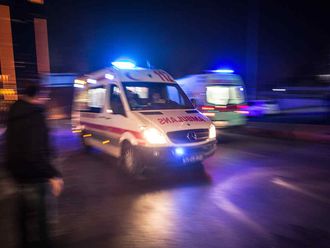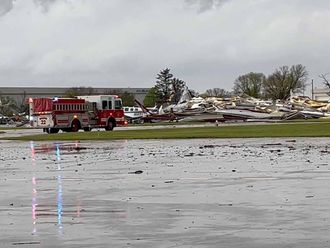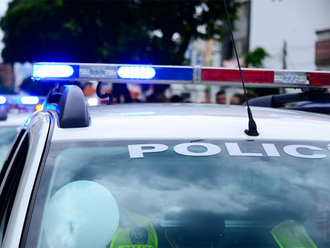
New York: The Metro-North Railroad train that derailed on Sunday, killing four people and injuring dozens more, was travelling at roughly 82mph (131km/h) just before it veered off the tracks, federal investigators said on Monday, more than twice the allowable 30mph (48km/h) speed through a curving stretch of track.
Earl Weener, a board member with the National Transportation Safety Board, said that it remained unclear if the speed was the result of human error or faulty equipment. But the train’s data recorders, which revealed the speed, also indicated that the pressure on the throttle did not drop to zero until six seconds before the derailment.
The extraordinary speed — even a relative straightaway north of the crash site has a maximum allowable speed of 70mph — shed new light on the deadliest New York City train derailment in more than two decades.
The safety board said that interviews with the engineer, identified as William Rockefeller, began on Monday but had not been completed. Drug and alcohol tests had been conducted, though Weener said the results were not yet available. Rockefeller’s cellphone has also been recovered, Weener said.
In a series of television appearances earlier on Monday, Gov. Andrew M. Cuomo said that it appeared that the train was travelling too fast as it hit a curve in the tracks.
“I think it is going to be speed-related,” Cuomo said on the Today show. “It was a tricky turn on the system, but it is a turn that has been there for decades.”
The governor’s comments came as workers used huge cranes to right the derailed passenger cars early on Monday, clearing the wreckage and working to restore service for thousands of commuters.
Rockefeller was released from the hospital late on Sunday.
A Metropolitan Transportation Authority official said the engineer told emergency medical workers that when he realised it was heading into the curve too quickly, he “dumped the brakes,” an emergency maneuver, and though the train slowed somewhat, it then derailed.
A key question, the authorities said, would be not only whether the brakes were applied — and when — but also why the train was travelling so fast as to require an emergency maneuver.
Cuomo said there were three possible causes for the accident: the condition of the tracks, an equipment failure or human error.
On Sunday, a longtime engineer on the Hudson line, who requested anonymity because he did not want to be seen as involving himself in the case of a colleague, said that despite the sharpness of the curve, the stretch was “not an especially dangerous area” for experienced operators.
“It’s like driving your car,” he said. “When you’re coming up to a curve, you slow down.”
Rail safety experts have wondered whether a system known as positive train control — which Metro-North and other railroads must install by 2015, according to a federal mandate — might have mitigated the crash.
While it is unclear if the system could have prevented the episode entirely, one feature of positive train control is its capacity to slow trains as they go around bends like the one at Spuyten Duyvil.
Last month, the authority’s board approved a contract to begin installing the new system.
Some 26,000 people had their Monday morning commute disrupted. Metro-North’s Hudson line is running limited service between Poughkeepsie and Yonkers, and is suspended entirely south of Yonkers.
Many riders put the delays in perspective.
When the 5.54am train from Poughkeepsie left the tracks on Sunday, it was the first time in the history of the Metro-North Railroad that a passenger has been killed in a crash.
When she first heard about the accident, Michelle Manning said her first thought was about how she would get to work. Then she learnt of the casualties.
“Four people killed, 11 critically injured, it’s awful,” she said at the Yonkers train station. “It’s scary because I take that route every single day. I’ve never been afraid to take Metro-North, so this is upsetting.”
Still, she had to get to work.
On Monday, she boarded the first shuttle bus to the 242nd Street station on the No. 1 subway line around 5.15am.
“It normally takes me 23 minutes to get to work,” Manning, 38, said. “Today I’m budgeting three hours.”
Investigators from the National Transportation Safety Board were broken up into four teams, focusing on different areas, including one team that was working to validate the information of the train’s data recorders, which could provide key information about why the train may have been speeding.
Cuomo said that the accident was much worse up close than it appeared from a distance.
“It was truly a horrific situation,” he said. “It looked like a child’s train set that was just strewn about.”











